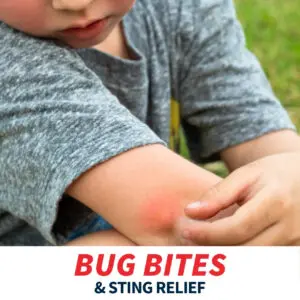History of the Flu Virus and Importance of Vaccine Development
 Humanity has dealt with various illnesses for centuries, leading to constant scientific research to eradicate the disease or vastly lower mortality rates these bacteria or viruses cause. Although many deadly diseases no longer pose much threat thanks to the development of vaccines, others continue to evolve or are making a comeback due to the anti-vaccination movement. The influenza virus is one that has several strains continuing to evolve and has killed many people throughout the world and, unfortunately, continues to do so.
Humanity has dealt with various illnesses for centuries, leading to constant scientific research to eradicate the disease or vastly lower mortality rates these bacteria or viruses cause. Although many deadly diseases no longer pose much threat thanks to the development of vaccines, others continue to evolve or are making a comeback due to the anti-vaccination movement. The influenza virus is one that has several strains continuing to evolve and has killed many people throughout the world and, unfortunately, continues to do so.
As research continues into how to provide the best protection from death caused by the influenza virus and its complications, let’s step back and see how far we’ve come.
1918: Flu Pandemic
Back in 1918, the most severe pandemic occurred thanks to the H1N1 influenza virus. The virus was spread worldwide, infecting an estimated 500 million people, but was first identified in United States military personnel in the spring of that year. At least 50 million people around the world died due to the illness, with 675,000 of those being in the United States. The deaths were highest amongst several age groups, including those younger than 5, individuals 20-40 years old, and 65 years and older. At this time, there was no vaccine available to help defend against the virus and antibiotics were also unavailable to treat any secondary bacterial infections, so the only real intervention was isolation, quarantine, hygiene, disinfectants, and public gathering limitations. As a result of this pandemic, the life expectancy in the United States dropped. For women, it dropped from 54 to 42, and for men, it dropped from 48 to 36.
1933: Influenza Virus Isolated
There was still quite a bit of confusion as to the cause of influenza. Scientists were not sure if the illness was caused by bacteria or a virus, which made treatment and prevention impossible. In early 1933, British scientists Wilson Smith, MD, C.H. Andrewes, MD, and P.P. Laidlaw took the throat washings from patients who exhibited influenza symptoms and filtered them through a material that does not allow bacteria to pass. When they attempted to culture the bacteria, there was none detected. They then decided to expose a variety of animals with the throat washings, leading to ferrets becoming ill with flu-like symptoms after about three days.
Other ferrets that had been exposed to those infected with influenza then became ill due to either directed contact or contact with nasal washings. Thanks to this research, they also found that humans and ferrets who recovered from influenza had developed specific antibodies, demonstrating that a vaccine could be possible and effective.
1940: A New Type of Influenza is Isolated
After the 1933 discovery, researchers began to notice that the blood of some patients did not react with antibodies to that specifically-isolated virus, sparking the idea that more than one type of influenza virus existed. A researcher at Rockefeller Center University in New York City by the name of Thomas Francis, Jr., MD, obtained throat washings and blood samples from ill children at a nearby home. Again, ferrets were infected and exhibited identical influenza symptoms, even though antibodies from the blood samples did not react with the known virus.
These findings, along with other testing, led to Francis discovering a new type of influenza, which has become known as influenza B.
1945: The Influenza Vaccine is Approved
Because of the high number of deaths in the U.S. military during the 1918-1919 influenza pandemic – roughly 1 in every 67 soldiers died – an influenza vaccine was high priority. The first flu vaccine was approved for military use in the U.S. in 1945 and civilian use in 1946. It included the whole virus, inactivated, of both influenza A and B. Thomas Francis, Jr., MD, and Jonas Salk, MD, conducted much of the research to create an effective vaccine.
Over the years since the 1918 pandemic and research breakthroughs, newly discovered strains have emerged, causing their own pandemics, prompting the U.S. Public Health Service in 1960 to recommend an annual flu vaccine, particularly for those at high risk of complications. Now, we understand the benefit the flu shot has for everyone in the population, from helping your body produce antibodies against the virus, to lowering your risk of hospitalization as well as helping those around you who may be more vulnerable.
Unfortunately, the influenza virus is one that many still do not take seriously as a potentially deadly disease, with many individuals opting out of the annual vaccination thanks to circulating myths. Getting the flu shot each year is the best defense against the flu virus as it is formulated with the strains predicted to be the most common based on scientific research and observation. Since its discovery as a virus, a few different flu vaccines have been developed and made available to everyone medically able:
- Trivalent is the most common, protecting against H1N1, H3N2 and influenza B viruses. This is administered via needle for ages 5 and over.
- Quadrivalent vaccines include protection from the same 3 viruses in the trivalent, but also include an additional B virus. There are different options for this shot, and some can be administered to children as young as 6 months and older.
Medical professionals and scientists have put in many years of work and dedication and continue doing so in order to provide a safe, effective defense against a potentially deadly illness. Opting out of receiving the flu vaccine for reasons that are not due to medical restrictions is putting not only yourself, but all of those around you at risk.
Now is the time to receive your flu shot. It will take about 2 weeks to build up your body’s antibodies for full protection, so get ahead of the peak season now. Stop in to any of our locations for your vaccination today.




